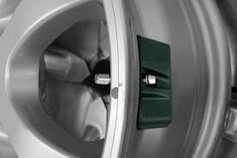
Tire Pressure Monitoring System (TPMS) Services
TPMS light on? Come in for a free system check!
Proper tire inflation is the key to longer tread life, safer handling, and better fuel economy. Tire pressure monitoring systems (TPMS) have been required safety equipment for five years. More than 50 million cars on the road today use TPMS. The technology does require maintenance, but offers many benefits.
Why It's Important
- TPMS saves lives. Before TPMS, flat tires and blowouts contributed each year to more than 78,000 crashes, 10,000 injuries and 400 fatalities.
- TPMS saves money. By keeping your tires inflated to the correct pressure, you can improve fuel efficiency by 3% and maximize tread life (rotating your tires helps, too).
- TPMS improves handling. Your car holds the road better when your tires are “just right.”
How It Works
- The system alerts you when one of your tires is underinflated by 25%. Check your tires immediately and fill them to the correct air pressure.
- Special sensors, combining a microprocessor and a wireless transmitter, ride inside the wheel rims and monitor tire pressure. Some physically gauge pressure; others calculate tire pressure, in conjunction with your ABS system, based on tire speed and rolling diameter.
- Some systems provide real time data on each of your tires; others only warn you when one of your tires is low.
- The warning symbol for low tire pressure looks like an exclamation point inside a tire cross section. Or, it can be the top view of a car that shows which your four tires is underinflated.
- Of course, TPMS is only an early warning system. You must act on the warning.
- Check your tires regularly and keep them inflated to specification. You’ll find the recommended and maximum pressure listed in your owner’s manual or on the vehicle placard—usually on the driver’s door post, inside the glove box, or affixed to the fuel filler cover.
Maintaining your Tires & TPMS Sensors
- Check all four tires at least monthly. Don’t wait for the low pressure warning light.
- Use a quality tire pressure gauge. You can’t judge tire pressure accurately by eyeball.
- When you buy new tires, or rotate them, be sure to have the TPMS sensors transferred and the system reset.
- If adding air to your tires does not clear the TPMS warning light, have a professional auto technician examine your sensors and onboard computer.
- Sensor batteries usually last about five years. Currently, the whole sensor must be replaced when the battery dies.
- Take special care when filling tires and handling valve stems and caps. If you damage a TPMS valve stem, replacements can run $75 and up.
- Always tightly recap the valve stem after each filling to prevent corrosion and dirt from clogging the valve.
The TPMS & Tire Experts
- If you are new to TPMS, ask one of our technicians to show you how your particular system works.
- Schedule an appointment online for TPMS check and air fill.


